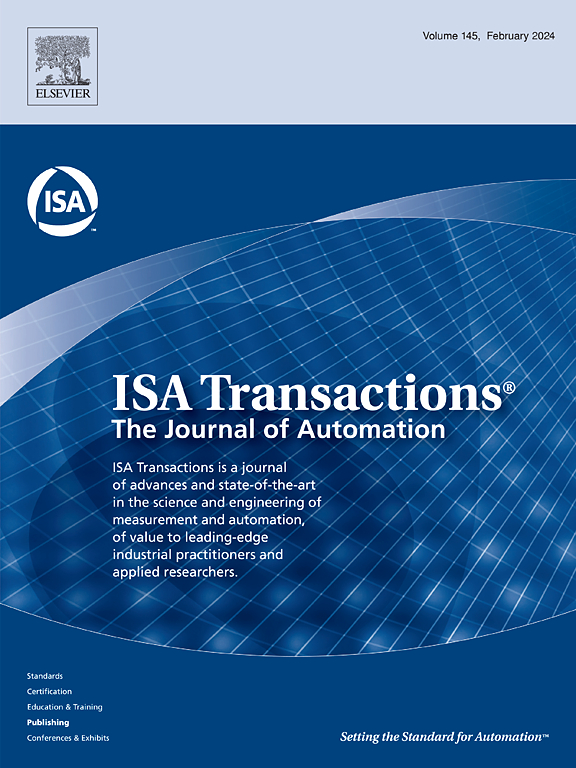A segmented model based internal model control scheme of electromagnetic micro-mirror systems
IF 6.5
2区 计算机科学
Q1 AUTOMATION & CONTROL SYSTEMS
引用次数: 0
Abstract
In this paper, a segmented internal model control (SIMC) scheme based on the segmented combination model of the electromagnetic micro-mirror system (EMMS) is established. Notice that highly underdamped oscillation and rate-dependent hysteresis exist in the EMMS, so it is a complex nonlinear dynamic system. In order to control the deflection angle of the EMMS using the internal model control strategy, it is necessary to establish the inverse model of the EMMS. Therefore, a new model structure that is convenient for inversion is proposed in this paper to describe the characteristics of the EMMS with underdamped and rate-dependent hysteresis. In the proposed scheme, the model is a combination of a group of weighted sub-models based on the segmentation of the system's operating frequency. The weight of each segmented sub-model is not a constant but a new type of function which is also called the smoothing factor. Its function is to smooth the switching between sub-models, thereby reducing the dynamic error caused by model switching. In addition, the particle swarm optimization (PSO) algorithm is used to determine the optimal frequency segmentation points, which helps to obtain the optimal model for describing the system characteristics. Based on the proposed segmented combination model, the corresponding segmented internal model control with two-degree-of-freedom filters is proposed, and the corresponding filters in the internal model control are designed based on the small gain theorem. Finally, the proposed control strategy is applied to the control of the deflection angle of the electromagnetic micro-mirror to verify the proposed control method. Moreover, the non-smooth internal model control strategy is also used for comparison in the experiments.
基于分段模型的电磁微镜系统内模控制方案。
基于电磁微镜系统(EMMS)的分段组合模型,提出了一种分段内模控制(SIMC)方案。EMMS存在高度欠阻尼振荡和速率相关滞后,是一个复杂的非线性动态系统。为了利用内模控制策略控制EMMS的偏转角,有必要建立EMMS的逆模型。因此,本文提出了一种便于反演的新模型结构来描述欠阻尼和速率相关滞后的电磁系统特性。在该方案中,模型是基于系统工作频率分割的一组加权子模型的组合。每个分段子模型的权值不是一个常数,而是一种新的函数,也称为平滑因子。它的作用是平滑子模型之间的切换,从而减少模型切换引起的动态误差。此外,采用粒子群优化(PSO)算法确定最优频率分割点,从而获得描述系统特性的最优模型。基于所提出的分段组合模型,提出了相应的带有二自由度滤波器的分段内模控制,并基于小增益定理设计了内模控制中相应的滤波器。最后,将所提出的控制策略应用于电磁微镜的偏转角度控制,验证了所提出的控制方法。此外,实验中还采用了非光滑内模控制策略进行比较。
本文章由计算机程序翻译,如有差异,请以英文原文为准。
求助全文
约1分钟内获得全文
求助全文
来源期刊

ISA transactions
工程技术-工程:综合
CiteScore
11.70
自引率
12.30%
发文量
824
审稿时长
4.4 months
期刊介绍:
ISA Transactions serves as a platform for showcasing advancements in measurement and automation, catering to both industrial practitioners and applied researchers. It covers a wide array of topics within measurement, including sensors, signal processing, data analysis, and fault detection, supported by techniques such as artificial intelligence and communication systems. Automation topics encompass control strategies, modelling, system reliability, and maintenance, alongside optimization and human-machine interaction. The journal targets research and development professionals in control systems, process instrumentation, and automation from academia and industry.
 求助内容:
求助内容: 应助结果提醒方式:
应助结果提醒方式:


